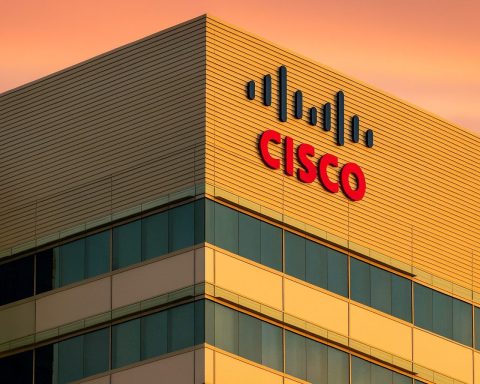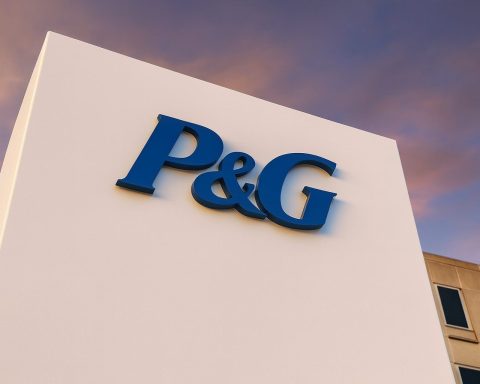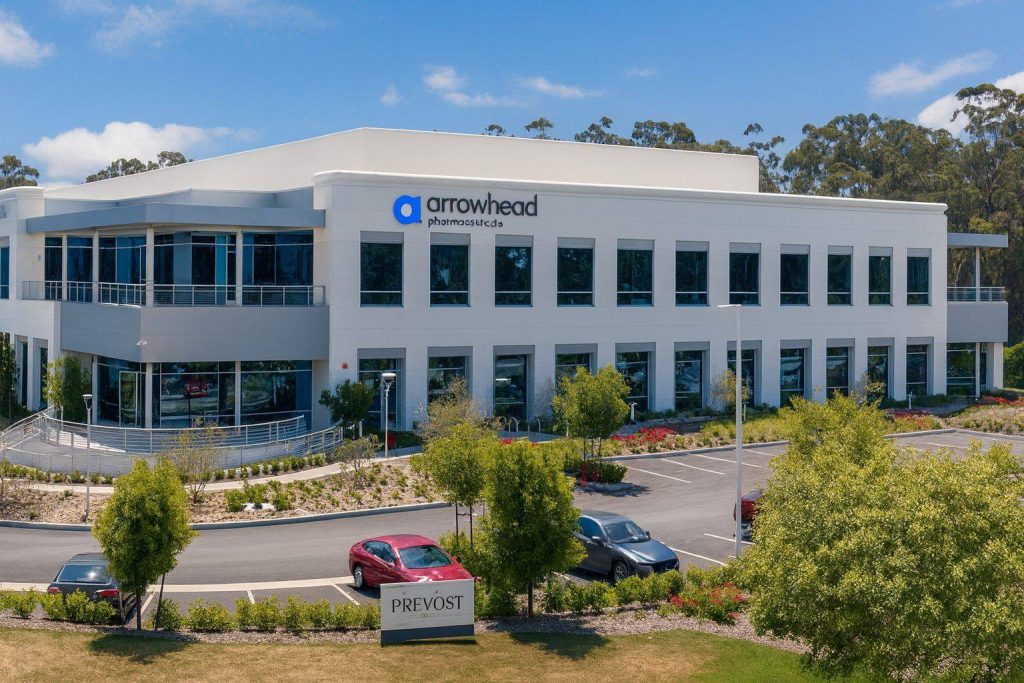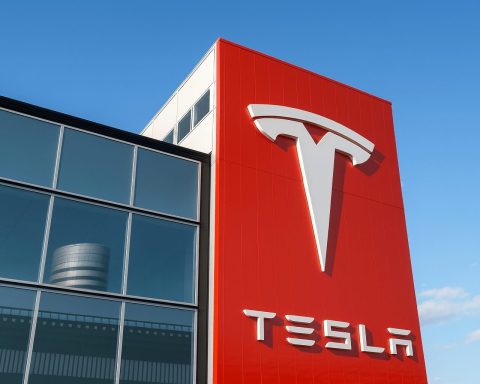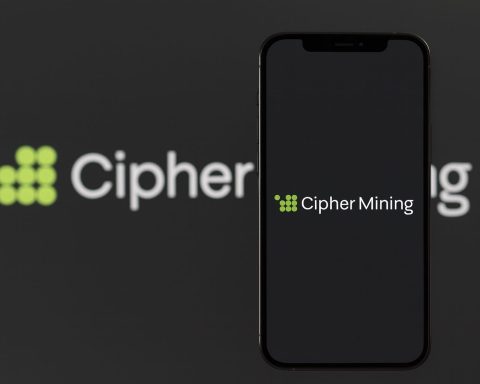Lam Research Corporation (NASDAQ: LRCX) is back in the spotlight after a powerful tech-led rally pushed the stock more than 5% higher in the latest U.S. trading session, adding to an already stellar 2025 run. As of the morning of 25 November 2025, the freshest data investors can see reflects Monday’s close at about $150.38 per share, up roughly 5.4% on the day. [1]
While Lam hasn’t issued any new company press releases today, several fresh market reports and analyst pieces from the last few days — plus Monday’s sharp move — are shaping the story for LRCX right now.
Lam Research stock price today (25 November 2025)
- Last close (latest available): around $150.38
- Daily move: +$7.73, or about +5.4%, versus the prior close near $142.65. [2]
- Market cap (real‑time estimate): just above $160 billion based on current trading data, while recent analyst features still describe Lam as a roughly $180+ billion large‑cap due to this year’s big rally. [3]
- 52‑week and 2025 performance: over the last 12 months Lam’s share price has climbed about 112%, and it is up roughly 106% year‑to‑date, dramatically outpacing the S&P 500 and even broad semiconductor ETFs. [4]
In other words, Monday’s surge didn’t come out of nowhere — it’s another leg in what has already been a blockbuster year for Lam Research stock.
Timing note: U.S. markets traded this move on Monday, 24 November 2025; for many global investors this is already 25 November, so all price references here are “as of last close.”
Why Lam Research stock just jumped over 5%
Tech and AI names led a broad market rally
A new Barchart market recap reports that U.S. indices ripped higher on Monday as investors bought back into big tech and AI‑linked names, with the Nasdaq 100 gaining about 2.6% and the S&P 500 up around 1.6%. [5]
Within that move, semiconductor and AI‑infrastructure stocks were stand‑out winners. The recap specifically notes that:
- Lam Research (LRCX) and Advanced Micro Devices (AMD) both closed up more than 5%.
- Other chip names like Micron, Western Digital and Marvell also surged, as traders rotated back into high‑beta AI plays after a brief pullback. [6]
The rally was helped along by:
- Falling Treasury yields – the 10‑year U.S. yield slipped to roughly 4.03% as Federal Reserve officials floated the possibility of a December rate cut, easing pressure on growth stocks’ valuations. [7]
- Rising odds (around 80% in futures pricing) of that December Fed cut, according to the same report. [8]
Lam is heavily associated with the AI and advanced chip build‑out, so when the market re‑embraces the “AI trade,” it tends to be pulled higher along with Nvidia, TSMC, Samsung‑linked names and other key players in that ecosystem. [9]
Big‑money options “whales” are active in LRCX
On 24 November 2025, Benzinga highlighted a burst of options activity in Lam Research, flagging 67 unusual trades picked up by its scanner. [10] Key details from that report:
- 52 call contracts vs. 15 put contracts, with calls representing about $5.1 million in notional value and puts about $1.55 million. [11]
- The sentiment split was described as roughly 47% bullish and 46% bearish, suggesting a heavy but mixed positioning rather than one‑way euphoria. [12]
- At the time of that note, Lam was trading around $145.61, up just over 2% on the day, with volume above 5 million shares and technical indicators like RSI creeping toward overbought territory. [13]
The “whale” traders were concentrated in a strike range from $70 to $175, mostly in contracts expiring over the next several quarters. [14]
What this means:
- Heavy options flow confirms institutional interest in Lam, but the mix of bullish and bearish bets shows that big money is actively hedging and speculating — not unanimously calling for more upside.
- For stockholders, it’s a reminder that volatility can stay elevated, especially after a 100%+ 12‑month run.
Fundamentals behind the move: Lam’s latest earnings and growth profile
September 2025 quarter results
Lam’s most recent earnings report, for the quarter ended 28 September 2025, helps explain why investors are willing to pay rich multiples for the stock. [15]
From the company’s official press release:
- Revenue: about $5.32 billion, up 3% quarter‑over‑quarter.
- GAAP gross margin: around 50.4%, with operating margin of 34.4%.
- GAAP EPS:$1.24 per diluted share.
- Non‑GAAP EPS:$1.26, only modestly below the prior quarter despite heavy investments. [16]
Geographically, Lam’s revenue is still tilted heavily toward Asia:
- China accounted for about 43% of quarterly revenue.
- Taiwan 19%, Korea 15%, Japan 10%, with the United States only 6% and the rest spread across Southeast Asia and Europe. [17]
Management framed the quarter very much in AI terms, noting that Lam’s innovations help customers tackle “AI‑driven semiconductor manufacturing inflections” and emphasizing a large opportunity set across new chip architectures. [18]
Growth metrics highlighted by research firms
Several recent analyst and research notes paint Lam as one of the stronger growth stories in semiconductor equipment:
- A Zacks‑authored piece (syndicated on Nasdaq) assigns Lam a Growth Score of “A” and a Zacks Rank #2 (Buy), citing:
- Projected mid‑teens EPS growth (~15–16%) this year, versus an industry average in the mid‑single digits.
- Cash‑flow growth over 30% year‑over‑year, well ahead of peers, and an annualized cash‑flow growth rate around 16–17% over the past 3–5 years. [19]
- A Barchart analyst overview notes that for fiscal 2026 (ending June), Wall Street expects Lam’s EPS to grow around 15.7% year‑on‑year, to roughly $4.79, with Lam having beaten consensus in each of the last four quarters. [20]
Taken together, those numbers explain why Lam is trading at a premium valuation: investors are paying up for strong, relatively consistent growth in a cyclical industry.
Strategic moves: $65M Oregon expansion, dividend momentum and balance‑sheet strength
New Tualatin building deepens Lam’s “Silicon Forest” footprint
On 21 November 2025, Lam held a ribbon‑cutting ceremony for a new $65 million office building (“Building G”) at its Tualatin, Oregon campus — a region often dubbed the “Silicon Forest.” [21]
According to Lam’s own release and a detailed recap from Investing.com:
- The new facility is a four‑story, 120,000‑square‑foot building.
- It provides up to 700 workspaces for current and future employees, primarily supporting research and development operations. [22]
- The project is part of a multi‑year plan to bolster capacity near customers as the semiconductor industry marches toward a projected $1 trillion global market. [23]
Investing.com also highlights that Lam has delivered:
- Around 25.7% revenue growth over the last 12 months,
- A current ratio of about 2.2, underscoring solid near‑term liquidity,
- And a PEG ratio near 0.65, implying the stock’s P/E is still reasonable relative to its growth rate. [24]
Dividends: 13% increase and a 12‑year growth streak
Lam is still growth‑focused, but it is quietly becoming a more meaningful dividend payer:
- On 6 November 2025, the board declared a quarterly dividend of $0.26 per share, payable 7 January 2026 to holders of record on 3 December 2025. [25]
- This follows an August 2025 decision to raise the dividend by 13%, from $0.23 to $0.26 per share. [26]
- According to Investing.com, Lam has now increased its dividend for 12 consecutive years, while delivering about 69% price appreciation over the last six months alone. [27]
At Monday’s closing price around $150, the new dividend translates to an annual payout of about $1.04 per share, or a yield of roughly 0.7% — modest, but a positive signal about management’s confidence in future cash flows.
How Wall Street values Lam Research stock right now
Analyst ratings and price targets
A recent Barchart deep‑dive on LRCX pulls together the current Wall Street stance: [28]
- Coverage: 32 analysts.
- Consensus rating:“Moderate Buy”, built from:
- 21 “Strong Buy” recommendations,
- 2 “Moderate Buy” ratings,
- 9 “Hold” ratings.
- Average 12‑month price target:$162.23, implying roughly high‑single‑digit upside from recent prices.
- Street‑high target:$200, which would represent about 30–35% upside if achieved.
Several banks have recently become more bullish:
- TD Cowen lifted its target from $145 to $170 and kept a Buy rating, citing strong September‑quarter performance and expectations that Lam will benefit from NAND upgrades, high‑bandwidth memory (HBM) demand and leading‑edge logic strength into 2027. [29]
- Cantor Fitzgerald reiterated an Overweight rating and a $170 target, noting that Lam has weathered about $200 million in export‑restriction headwinds yet continues to execute well. [30]
- Bernstein SocGen Group also raised its target to $170 from $105, highlighting Lam’s positioning in gate‑all‑around (GAA) transistors, advanced packaging, HBM and NAND upgrades. [31]
Valuation perspectives: undervalued, fairly valued… or rich?
Not all valuation lenses agree, which is exactly why Lam is so actively debated:
- Simply Wall St recently revisited Lam after a small pullback and noted:
- A one‑year total shareholder return near 98%.
- A widely circulated “market narrative” that pegs fair value at roughly $158.52, about 10% above the $142.65 close used in their model, implying modest undervaluation at that time. [32]
- However, their internal DCF model suggests Lam is trading above intrinsic value, implying the market may be pricing in more growth than conservative fundamentals support. [33]
- An IndexBox large‑cap screen, based on Yahoo Finance analysis, lists Lam as one of two “buy” candidates for 2025 (alongside Moody’s), citing:
- 11.2% annual revenue growth over the past two years,
- A 9.4‑point expansion in free‑cash‑flow margin over five years,
- And an eye‑catching ~64% return on capital, a very high figure even within semiconductors. [34]
That analysis notes Lam’s forward P/E in the high‑20s (around 28.5x based on a $139.49 share price at the time), which is expensive versus the market but more palatable when compared to its growth metrics. [35]
Bottom line on valuation:
- The consensus view is that Lam is not cheap, but still offers some upside if AI‑driven demand and memory recovery unfold as expected.
- More conservative models warn that after a 100%+ one‑year rally, any disappointment in AI capex, China demand or margins could hit the stock hard.
Key risks investors should keep on their radar
Even on a strong day like this, there are important risk factors in the background:
- China exposure and export controls
- Cyclicality of semiconductor equipment
- Lam’s biggest customers include TSMC, Samsung, Intel and Micron; order cycles can swing sharply depending on memory pricing, data‑center demand and consumer electronics trends. [38]
- Valuation risk after a huge run
- With the stock up over 100% in a year, expectations are high. If AI spending slows or margins disappoint, the compression in Lam’s multiples could be severe. [39]
- Geopolitics and supply‑chain complexity
- Lam operates in a heavily regulated, geopolitically sensitive part of the chip stack; export rules, subsidies and national‑security concerns can all change the equation quickly.
What to watch next for Lam Research stock
Several upcoming events and trends could shape how LRCX trades after today’s jump:
- UBS Global Technology and AI Conference (2 December 2025)
Lam’s CEO Tim Archer and CFO Doug Bettinger are scheduled to participate in this event, which is likely to draw questions about AI tools demand, China restrictions and 2026 guidance expectations. [40] - Next earnings cycle (early 2026)
Options traders flagged by Benzinga were already positioning for moves in Lam’s stock over the next several months, with notable activity in early‑ and mid‑2026 expiries. [41] - Federal Reserve decisions and rates path
Monday’s rally was fueled in part by increased odds of a December rate cut. If the Fed does cut and the yield curve stays supportive, high‑growth, AI‑linked names like Lam could continue to benefit. [42]
Takeaways for investors on 25 November 2025
As of today:
- Momentum is clearly on Lam Research’s side. The stock just logged a 5%+ daily gain in a powerful tech rally and remains one of the best‑performing semiconductor names of 2025. [43]
- Fundamentals are strong. Revenue, margins and cash flow all look solid; Lam is deeply embedded in critical AI, memory and advanced‑logic manufacturing flows, and it continues to invest aggressively in R&D capacity like the new Tualatin building. [44]
- Wall Street broadly likes the story, with most analysts rating the stock a buy and price targets clustered in the $160–$170 range — but expectations are high and views on valuation diverge. [45]
- Risks are real, especially China exposure, export‑control uncertainty and the possibility that AI spending grows more slowly than current models assume.
For anyone following Lam Research stock today (25 November 2025), the message is fairly clear: this is a high‑quality, high‑expectation AI infrastructure play. Monday’s spike confirms that when the market rotates back into AI and semiconductors, Lam is near the front of the line — but after such a strong run, position sizing, time horizon and risk tolerance matter more than ever.
Disclaimer: This article is for informational and news purposes only and does not constitute investment advice, a recommendation to buy or sell any security, or a substitute for professional financial guidance. Always do your own research or consult a qualified advisor before making investment decisions.
References
1. www.barchart.com, 2. www.barchart.com, 3. markets.financialcontent.com, 4. markets.financialcontent.com, 5. www.barchart.com, 6. www.barchart.com, 7. www.barchart.com, 8. www.barchart.com, 9. markets.financialcontent.com, 10. www.benzinga.com, 11. www.benzinga.com, 12. www.benzinga.com, 13. www.benzinga.com, 14. www.benzinga.com, 15. newsroom.lamresearch.com, 16. newsroom.lamresearch.com, 17. newsroom.lamresearch.com, 18. newsroom.lamresearch.com, 19. www.nasdaq.com, 20. markets.financialcontent.com, 21. www.prnewswire.com, 22. www.prnewswire.com, 23. www.prnewswire.com, 24. www.investing.com, 25. newsroom.lamresearch.com, 26. newsroom.lamresearch.com, 27. www.investing.com, 28. markets.financialcontent.com, 29. markets.financialcontent.com, 30. www.investing.com, 31. www.investing.com, 32. simplywall.st, 33. simplywall.st, 34. www.indexbox.io, 35. www.indexbox.io, 36. newsroom.lamresearch.com, 37. www.investing.com, 38. www.benzinga.com, 39. markets.financialcontent.com, 40. investor.lamresearch.com, 41. www.benzinga.com, 42. www.barchart.com, 43. www.barchart.com, 44. newsroom.lamresearch.com, 45. markets.financialcontent.com


